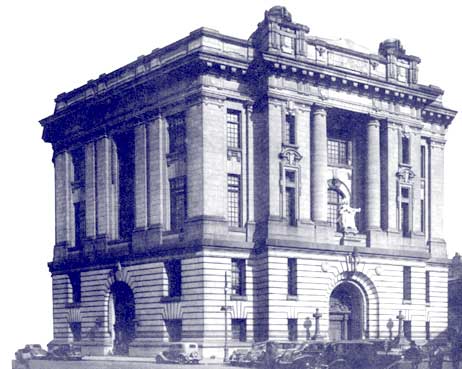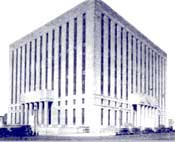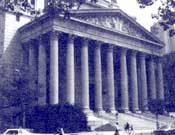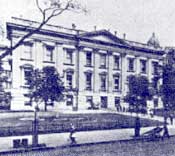Hon. Dianne T. Renwick, Presiding Justice
Susanna Molina Rojas, Clerk of the Court
1940 - 1949


Presiding Justice 1935-1947



The Second World War changed the City in concrete ways.
The state of war, and its complicating effect on issues of ownership and commerce, resonated in cases before the Appellate Division. Individuals pressed to regain money they had left in European banks, now under Nazi occupation. Transatlantic shipping companies sought legal recourse for shipping contracts, now broken, that had been made before the war.There were domestic questions as well. In New York, the Appellate Division held that city firemen who enlisted in the armed forces were entitled to job protection and other benefits. Anti-German sentiment caused the Court to reverse a criminal conviction, on the grounds that the prosecution used prejudice in painting the defendant as a Nazi sympathizer. One New York attorney was disbarred for extorting money from men subject to the draft, promising to get them “safe” positions in the Army. When the war was finally over, and its end celebrated in Times Square, the Court was left to deal with questions involving the rights of war veterans.
Through the 1930's and 1940's newspaper columnists such as Walter Winchell and Ed Sullivan had created “The Cult of Celebrity,” writing daily items about the rich and famous in New York. Frequently the target of libel suits, both columnists, among the most widely-read newspapermen in the country, were eventually broadcast on radio and television. Their barbed prose often led to litigation and celebrated feuds.
The new media concentration on the famous and notorious led to one suit by President Roosevelt’s son-in-law against Time, Inc., which had printed a story about the man’s alleged suicide attempt, and another by an attorney whom a radio commentator had allegedly called “a crooked lawyer mouthpiece.”
During the war years and afterward, the Court expanded the rights of individuals harmed by products.
In one case, the Court entered judgment in favor of a women whose newly-purchased ball gown was consumed by fire, burning her seriously. The Court stated that the dress manufacturer had reason to know that he had made the dress using highly flammable material. The rights of consumers would continue as a major concern of the Court over next decades.